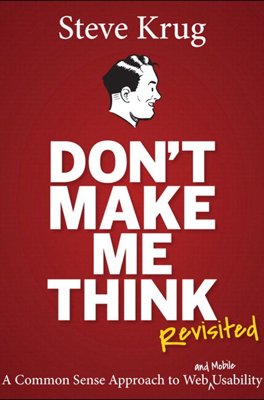Guide for the Perplexed
Making Usability Happen Where You Live
Background & Evolution: The chapter begins by explaining the evolution of usability roles. Originally dominated by the terms 'Usability' and 'User-Centered Design' (UCD) in the 1990s, the focus has shifted to a broader concept called 'User Experience' (UX), which encompasses various specialties such as Interaction Design, Interface Design, and Information Architecture.
Current Reality: There is a higher awareness and appreciation of UX today, partly thanks to the influence of prominent figures like Steve Jobs. However, the integration of multiple specialized roles under the UX umbrella can sometimes lead to confusion about their distinct contributions.
Effective Tactics to Promote Usability:
- Direct Experience: One of the most persuasive tactics is to involve company executives in live usability tests. Observing real users interacting with the company's products can provide impactful insights that are hard to ignore.
- Initiate Small, Informal Tests: Start with small, informal usability tests that don’t require extensive permissions and highlight quick wins that can be clearly communicated and celebrated.
- Competitive Analysis: Conducting usability tests on competitor websites can be an engaging way to highlight the importance of usability without the pressure of critiquing one's own company's site.
Usual Advice for Usability Advocacy:
- Demonstrate ROI: This involves quantifying the financial benefits of usability improvements, such as increased sales or reduced support calls.
- Speak Their Language: Tailor the communication of usability benefits to align with current business objectives and use corporate lingo to make a stronger case.
Relatable Approach and Humility: Using empathy and humility, the author advises UX professionals to understand the pressures and contexts of their superiors and colleagues to foster support for UX initiatives effectively.
Resist the Dark Forces
- Ethics in Usability: Usability work should aim to serve users, not manipulate them. The text warns against using usability as a tool for deception, suggesting a focus on honest enhancement of user experience rather than exploiting human psychology for corporate gains.
A Few Definitive Answers on Usability
- Clear Dos and Don'ts:
- Never Use Small, Low-Contrast Type: It hinders readability and accessibility.
- Avoid Labels Inside Form Fields: Though tempting, this can often lead to confusion and poor user experience.
- Preserve Link Color Distinction: Maintain clear visual distinctions between visited and unvisited links to aid navigation.
- Proper Heading Placement: Ensure headings are closer to the text that follows to maintain clear and logical content structure.
The chapter concludes by reinforcing the importance of adaptability and ethical practice in the field of usability, emphasizing the role of UX professionals as advocates for users, akin to how the Lorax speaks for the trees. The narrative also acknowledges the evolving nature of UX work and encourages ongoing learning and adjusting to new insights and challenges.
